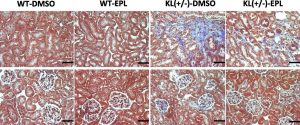Klotho and Anti-Aging
Klotho is a new anti-aging gene whose discovery has had a great impact on aging research. This gene, named after the purported Greek goddess Klotho who spins the thread of life, was so named because of its connection to and direct effects on the aging process. Aging is defined as the age-related decline in physiological functions necessary for survival and fertility. The aging process is multi-factorial, with genetic background and environmental stress as two critical components.
The klotho gene plays a pivotal role in regulating aging and the development of age-related diseases in mammals. Klotho expression is influenced by many physiological and pathological conditions, and is significantly altered with many physiological processes. Studies have demonstrated that a functional variant of klotho (KL-VS) was associated with human survival and longevity (defined as postnatal life expectancy greater than 75 years). A loss of klotho results in multiple aging-like phenotypes, yet overexpression of klotho gene extends lifespan by 20–30%. It is also interesting to note that klotho gene expresses in limited tissues, but a defect in klotho gene expression leads to multiple aging-like phenotypes involving almost all organ systems in mouse models.
Although genetic mutation of klotho causes multiple aging-related disorders in nearly all organs and tissues, the klotho gene is only expressed in limited tissues in mice, rats and humans: Mouse klotho is predominantly expressed in the kidney and the epithelium of the choroid plexus in the brain. Slight expression of klotho was also found in the pituitary gland, placenta, skeletal muscle, urinary bladder, pancreas, testis, ovary, colon, and inner ear. In the kidney, klotho mRNAs and proteins are localized in the distal tubular cells. Rat klotho is also predominantly expressed in the kidney, and faintly expressed in the brain, lungs, intestines, and gonads.
